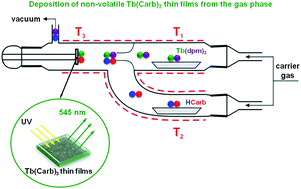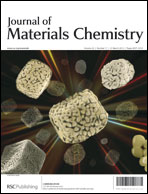Reactive chemical vapour deposition (RCVD) of non-volatile terbium aromatic carboxylate thin films†
Abstract
In this work we report a new RCVD technique which allows the deposition of nonvolatile compounds from the gas phase into thin films. The technique developed is based on the metathesis reaction in the gas phase between the volatile reagents with the following deposition of the nonvolatile product. A novel RCVD reactor has been constructed and consists of two


 Please wait while we load your content...
Please wait while we load your content...